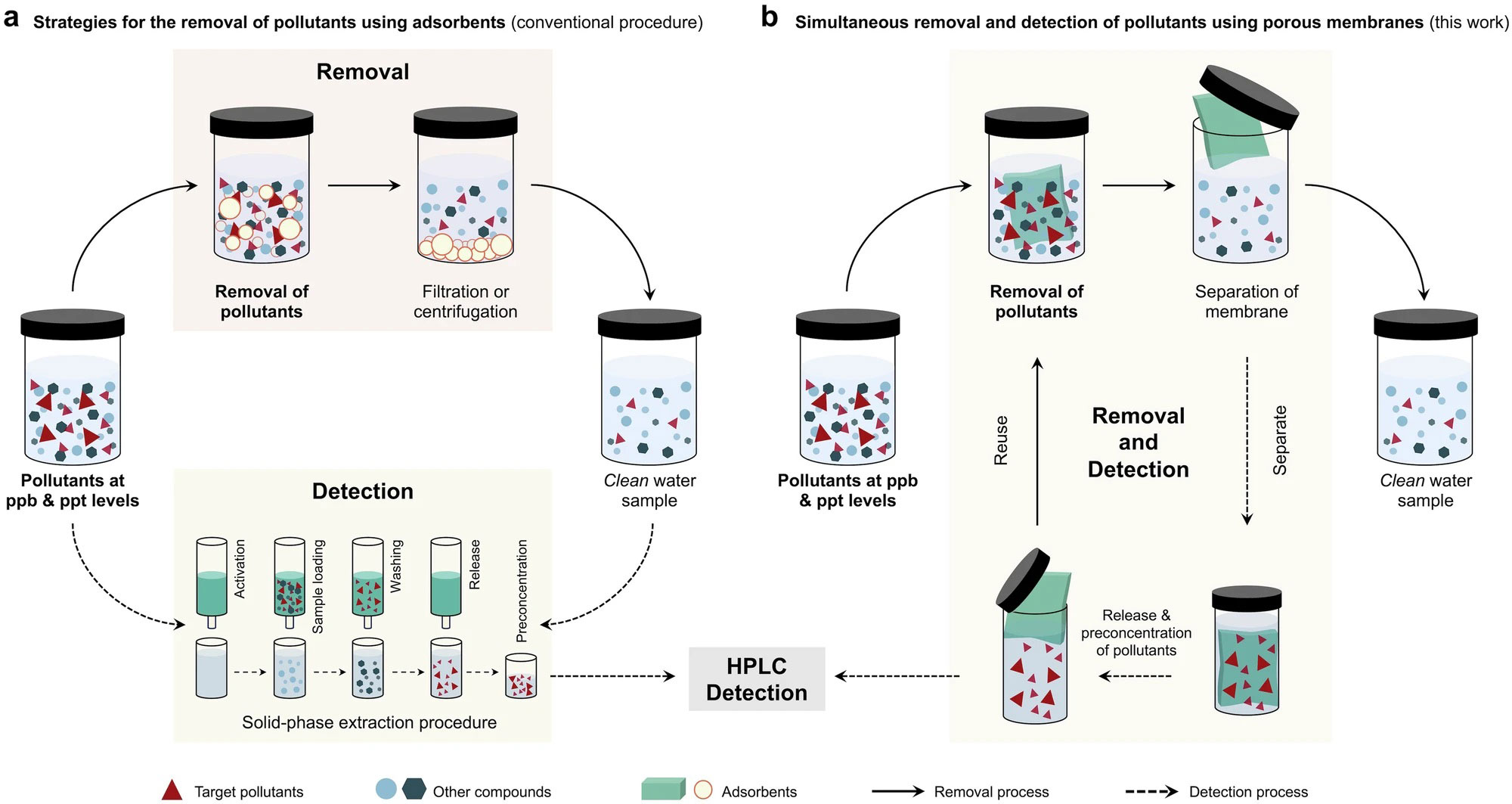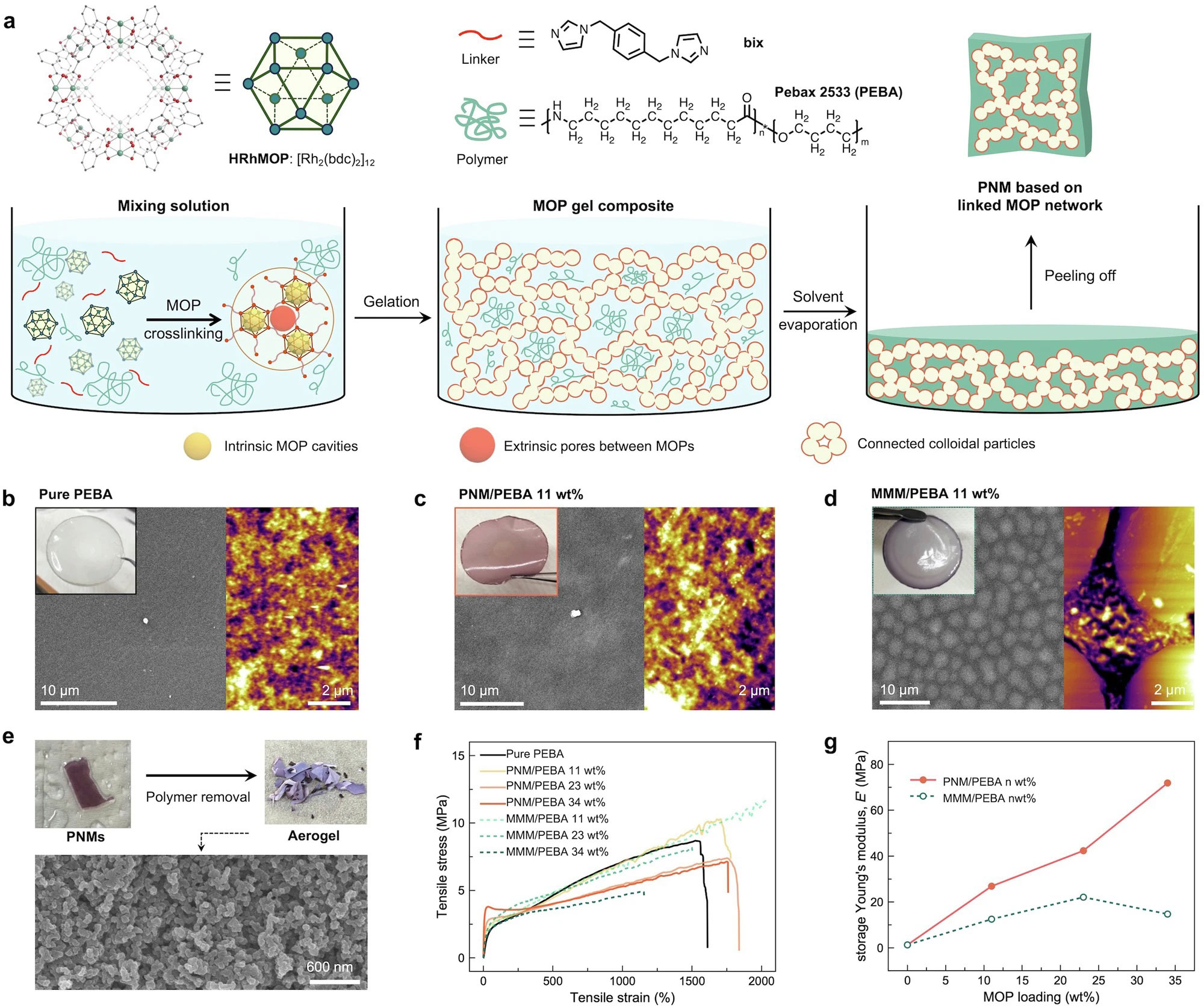A team of researchers from the Institute of Integrated Cellular Materials Science (Kyoto University), the Department of Macromolecular Science and Engineering (Kyoto Institute of Technology) in Japan, and the Department of Chemical and Biomolecular Engineering (University of Notre Dame) in the United States recently published the results of research in the field of water filtration in the journal Communications Materials, part of the scientific journal Nature Research Journals. It is a new method for filtering ‘pharmaceuticals and personal care products’ (PPCPs) present in wastewater in very low concentrations, which therefore escape existing filtration methods or are not even detected.
The dissolution of these PPCPs in water represents a contamination whose consequences are as yet unknown and which, if only for prevention, it is certainly desirable to eliminate. In this regard, research to date has proposed the use of microporous materials for the adsorption of these chemicals – adsorption, unlike absorption, occurs on a molecular scale. However, as we read in the study, this type of material ‘demonstrates the performance at a higher concentration than realistic environmental water due to the absence of efficient detection methods [for lower concentrations]’, and does so without interference from other components that are inevitably found in water under real-world conditions. It is precisely for this reason that scientists have come up with a ‘pore-networked membrane’ (PNM) that simultaneously removes and detects PPCPs ‘at trace level’, in other words, at very low concentrations.
PNMs are designed through the interconnection of adsorbents within polymeric matrices constructed from organometallic polyhedra (or compounds in which carbon atoms form covalent bonds with a metal atom), resulting in ‘continuous, tunable porous networks’ in accordance with the PPCP molecules. Tests carried out by the researchers, on water samples containing 13 contaminants, demonstrated the ability of the pore membranes to selectively adsorb PPCPs and therefore ensure their ‘removal and subsequently release them into analysis solution for detection’.
The study claims that network pore membranes have two components or ‘interpenetrated continuous phases’: the organometallic polymeric matrix that confers mechanical stability and the porous part created through the interconnection of ‘microporous adsorbent fillers’, the design of which allows tuning the ‘molecular selectivity’ to effectively trap target molecules.
In conclusion, according to the research paper, PNMs ‘surpass all other control systems and show enhanced adsorption capacity and tunable selectivity towards specific pharmaceutical drugs’. Or, in the words of project leader Shuhei Furukawa of Kyoto University’s Institute of Integrated Cellular Materials Science, ‘we developed new membrane materials that can simultaneously detect and remove trace-level pollutants’. Until now, water treatment was usually carried out in two steps: one for detection and one for removal. This shows the advantage and potential of applying the new material to such purification processes.
For more information, a detailed explanation of the experiment is available at Communication Materials, via the link in our source acknowledgement below.
Sources: Communication Materials by Nature, Asia Research News.
Images: Communication Materials.









